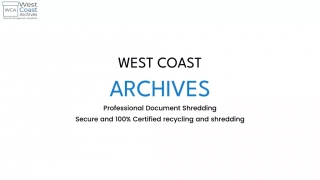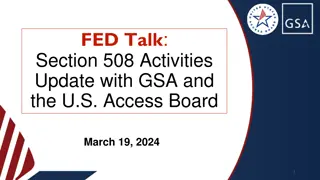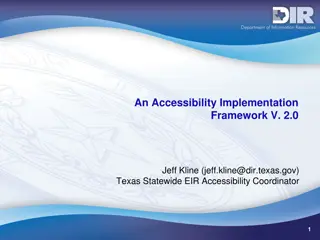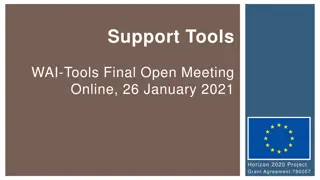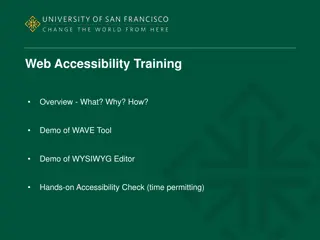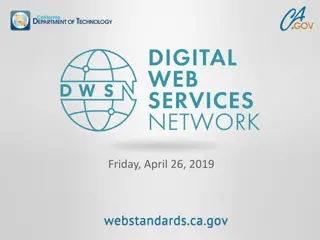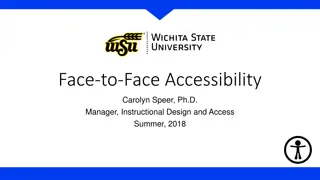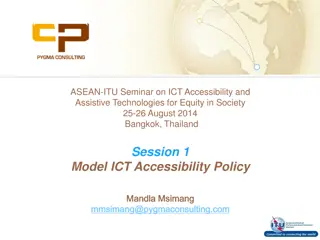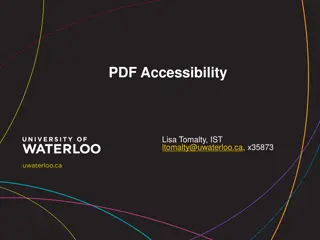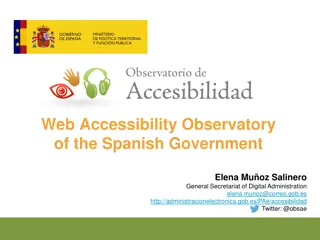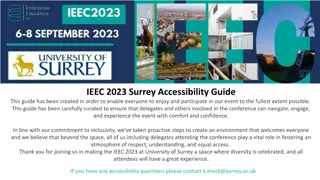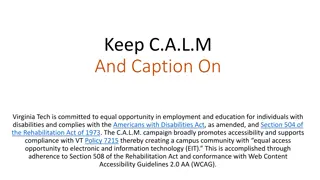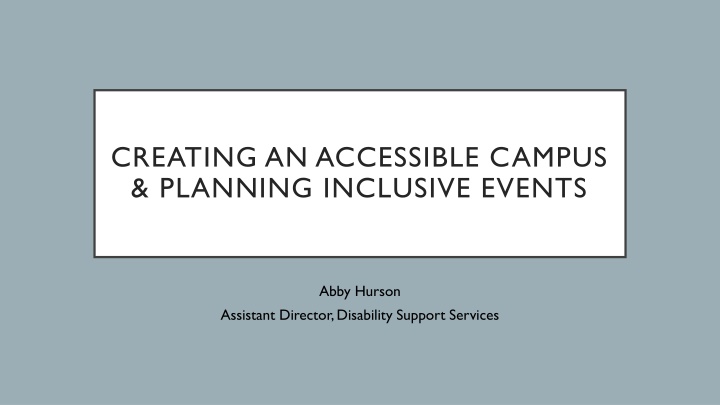
Planning Inclusive Events & Creating Accessibility on Campus
This comprehensive guide emphasizes the importance of creating an accessible campus and planning inclusive events for individuals with disabilities. It covers aspects like physical accessibility, inclusive event planning strategies, providing accommodation processes, and ensuring accessible social media practices to promote inclusivity. The content highlights critical considerations, best practices, and tips to foster a welcoming environment for all participants.
Download Presentation

Please find below an Image/Link to download the presentation.
The content on the website is provided AS IS for your information and personal use only. It may not be sold, licensed, or shared on other websites without obtaining consent from the author. If you encounter any issues during the download, it is possible that the publisher has removed the file from their server.
You are allowed to download the files provided on this website for personal or commercial use, subject to the condition that they are used lawfully. All files are the property of their respective owners.
The content on the website is provided AS IS for your information and personal use only. It may not be sold, licensed, or shared on other websites without obtaining consent from the author.
E N D
Presentation Transcript
CREATING AN ACCESSIBLE CAMPUS & PLANNING INCLUSIVE EVENTS Abby Hurson Assistant Director, Disability Support Services
PHYSICAL ACCESSIBILY: LOCATION Is room accessible? Is there an accessible path from the building entrance to the room? Is there an accessible bathroom nearby? Cohn 131 and 133 can only be accessed via a lift not ideal. Knott Hall B01 & B03 have limitations and are not ideal. Best practice: go and check out room prior to reserving! Best practice: If you know someone attending has mobility impairment or if you don t know exactly who will be attending, request a room you know is accessible and note on room reservation request form that the room must be accessible in case you don t get the room you want. Rooms in newer buildings that post-date the ADA (or have been renovated since the passing of the ADA) tend to be best. Sellinger, Maryland Hall, Library, Student Center. Think about furniture in room is there space for a wheelchair or a service dog at the conference table?
INCLUSIVITY FROM THE START: THINKING ABOVE AND BEYOND BASIC ACCESS DURING THE PLANNING STAGE For every event, consider: can people with disabilities participate with dignity and independently? If event is physical (trash clean up, roller skating, dances, etc), how will you ensure people with disabilities are included and feel welcome? If event involves media, how will we ensure someone with a hearing or visual impairment can access the material ?
PROVIDE A PROCESS TO REQUEST ACCOMMODATIONS Considering accessibility from the start is a must. But accommodations may occasionally still be required to ensure people with disabilities can fully and comfortably participate in an event or activity. Include a statement on event flyers open to the student body or the public such as: If you require an accommodation to attend this event/meeting/activity, please contact (specific person charged with receiving accommodations), at (email) or (phone) by (reasonable timeframe prior to event start. You can contact DSS or Loyola s ADA Coordinator if you need help implementing a requested accommodation. Advertise your built-in inclusivity, whether that is the location, the food options, alternatives to the main event, etc.
ACCESSIBLE SOCIAL MEDIA: PROVIDE MEANINGFUL TEXT ALTERNATIVES FOR ALL IMAGES Twitter: Within your profile, go to Settings > Accessibility, and then check "Compose Image Descriptions" and save your changes. The next time you attach a photo or image to a tweet, you will have the opportunity to add a description. This is particularly important if the image includes meaningful text. Make sure to include important details (dates, times, locations) in the alt text or in the body of your tweet, or someone using a screen reader won t view it! Instagram and Facebook generate automatic alt text, which you should edit to make sure is accurate and meaningful. https://help.instagram.com/503708446705527 https://www.facebook.com/help/214124458607871?helpref=search&sr=2&query =alt%20text
ACCESSIBLE SOCIAL MEDIA: MAKE HASHTAGS SCREEN READER FRIENDLY Capitalize the first letter of each word in hashtags so that screen reader software can figure out how to pronounce each word separately. For example: #DisabilityRights instead of #Disabilityrights.
ACCESSIBLE SOCIAL MEDIA: ADDITIONAL RESOURCES Some great resources with additional info https://www.3playmedia.com/2019/03/14/making-social-media- more-accessible-to-people-with-disabilities/ https://www.afb.org/about-afb/what-we-do/afb-consulting/afb- accessibility-resources/afbs-social-media-accessibility https://accessibility.umn.edu/tutorials/accessible-social-media
ELECTRONIC INFORMATION ACCESSIBILITY Materials and documents emailed to students or posted on websites/Moodle should be accessible. A great place to start is the Six Core Skills list on the DSS website. Headings and Document Structure Hyperlinks No! Read more about hyperlink best practices at http://webaim.org/techniques/hypertext/link_text. Yes!: Read more about hyperlink best practices. Bullets and Numbered Lists Color and Contrast Image Alt-text
FILMS AND VIDEOS Check to see if movies/videos include a closed-captioned version. Amazon video Netflix iTunes Store Add captions to videos posted on social media. 3 Play Media provides a good overview on how to do this on different platforms. Contact DSS for assistance if needed! Check to see if movies include a version with audio-description. American Council for the Blind updates a master list regularly. If it doesn t exist, ensure someone can request in-person description and contact DSS for assistance.
TRANSPORTATION If you need to reserve a Loyola charter, make sure to ensure at least one is wheelchair accessible. Not every shuttle in the rotation is accessible, so you must specify this when making the reservation! Motor pool considerations. Other transportation options.
FOOD ALLERGY AWARENESS Always provide gluten free and vegan options (vegan helps avoid common egg and dairy allergies). Ingredient lists help people with serious food allergies discern what is safe.
QUESTIONS OR RESOURCES Disability Support Services Marcia Wiedefeld, Director of DSS, x2062, mwiedefeld@loyola.edu Abby Hurson, Assistant Director of DSS, x7380, ashurson@loyola.edu. University ADA Coordinator Katsura Kurita, ADA/Title IX Coordinator, x5646, kkurita@loyola.edu Consider getting input from student groups comprised of students with disabilities (allow opportunity for input, but don t require it or expect students to speak on behalf of all students with disabilities at Loyola).


